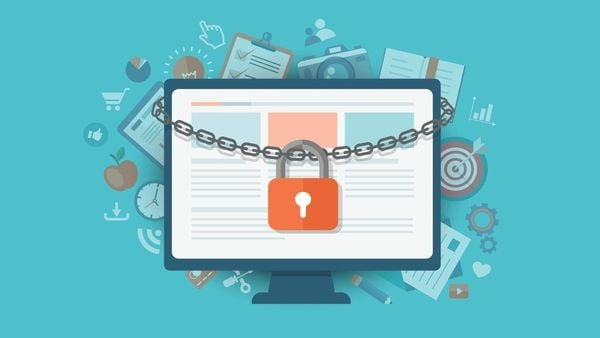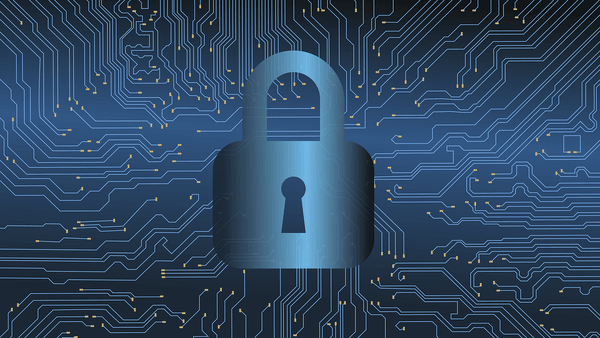
Blockchain Technology – the Future of Cybersecurity
June 25, 2020
8 Ways to Increase Your Online Security
June 30, 2020Modern-day society is driven by a rapidly evolving digital landscape vastly different than it was just decades ago. Over the years, technological advances have redefined, and in many cases, simplified how we live our daily lives. This has led to a significant increase in digital dependence, especially in newer generations of individuals who have come to rely on the efficiency and convenience of connected technologies.
While technology has afforded society many advancements over the years, however, it has also brought new dangers along with it. Cybercrime continues to plague businesses and organizations in nearly every industry, and the problem continues to persist. While there have been significant advances in cybersecurity over the years, a significant issue plaguing most businesses and organizations is the lack of adequate cybersecurity training.

Below will address some of the critical issues concerning cybersecurity awareness and practical steps that can be taken to teach new generations the importance of cybersecurity.
Understanding the Hidden Dangers of Remote Working
Even before recent events caused by the COVID-19 pandemic, remote working situations had become standard practice in modern-day businesses. The increased flexibility of working from home, along with the convenience of using preferred devices and equipment, has led to significant growth in the remote workforce. However, there are many hidden dangers associated with remote working arrangements that should be addressed when considering personal and professional data privacy.
Most remote workers are familiar with using their laptops or devices in areas such as coffee shops, libraries, airports, and other public spaces. However, unsecured public WiFi networks, often found and readily available in these types of locations, can present many cybersecurity dangers. When entering public networks that other users are connected to, cyber attackers can hijack devices and accounts used to access these public hotspots. Once attackers have gained access to a device, they can unleash a powerful payload of spam and malware attacks, compromising login credentials, and stealing valuable information.

There are practical steps, however, that remote workers can take when using these public WiFi hotspots. Utilizing a virtual private network (VPN) connection is one way to eliminate many of the security inefficiencies when connecting to unsecured wireless networks. VPN connections send network traffic through an encrypted tunnel, making it extremely difficult for attackers to access data stored on devices. Another best practice to follow is to disable any Bluetooth or near field communications (NPC) when not in use. These are other potential access points that attackers can use, and disabling these features reduces the user’s attack surface.
Reducing Your Digital Footprint
We live in a society where social sharing has become a daily, if not hourly, routine for many people. However, when limiting your exposure to cybercrime, it is wise to err on the side of caution when it comes to sharing too much information about yourself on the Internet.
Phishing schemes are a common tactic used by today’s cybercriminals to gain valuable insights into the lives of their intended targets. By utilizing information found on the Internet or stolen through other means, attackers can extract relevant information that can be used to compromise login credentials, gain access to banking details, and commit identity theft.
There are steps that individuals can take to reduce their digital footprint significantly. Taking note of all accounts that you create online while deactivating or deleting old ones is an excellent start to minimizing your attack surface. Future generations need to be taught the importance of valuing their digital information. This includes thinking twice before signing up for accounts or services that may go unused or forgotten about. When creating new accounts, this involves checking and calibrating the privacy settings on each separate platform as many are defaulted to be less restrictive.

Taking an overly cautious position when utilizing technologies, maintaining social media profiles, and following best cybersecurity practices when gaining access to connected services, individuals can reduce the likelihood of being targeted by a cyber attack. This includes changing login passwords regularly while utilizing multi-factor authentication (MFA), using adequate email encryption, and minimizing the amount of information shared in social circles.
The Importance of Regular Cybersecurity Training and Awareness
In businesses and organizations that maintain multiple employees regularly accessing business assets and connected services, having a regular routine of cybersecurity training and awareness is critical. This involves not only making employees aware of any hidden dangers they should be cautious of but also giving them the tools and solutions they need to strengthen their cybersecurity readiness.
Subscribing to the latest information and cybersecurity news is often an excellent place to start evaluating cybersecurity inadequacies and inefficiencies. In organizations, this can come in the form of practical training programs that are regularly scheduled and routinely updated that follow industry guidelines to address cybersecurity best practices. As part of these regular training programs, individuals can learn how to leverage the latest security solutions to keep their websites secure as well as personal and business information protected while also addressing the common pitfalls when accessing systems remotely.
Regular cybersecurity training can help develop invaluable skill sets in individuals and employees that can be used to further advance the cybersecurity industry as a whole. When attending and contributing to cybersecurity training sessions, individuals can sharpen their communication, critical thinking, and advanced problem-solving skills. All of these foundational skills are the backbone of modern-day cybersecurity solutions and will no doubt drive the development and implementation of future cybersecurity advancements.
Establishing and enforcing policy is another benefit to having a regular routine of cybersecurity training. As employees become more aware of the critical nature of following cybersecurity best practices, organizations can begin shaping short and long-term policies that protect, not only their business interests but also that of the employees and their personal data. Enforceable business policies are another effective way to communicate the critical importance of implementing and adhering to cybersecurity awareness training.
Cybersecurity is extremely dynamic, and so are the tactics used by modern-day cyber attackers. It’s due to this fact that teaching the new generation about the importance of cybersecurity preparedness is essential. This involves not only making them aware of the dangers currently present but also giving them the sustainable skill sets and knowledge they need to help them build a more secure future for themselves and others.
